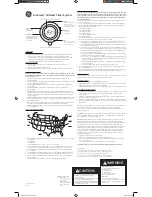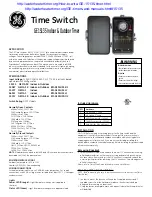
© National Instruments
|
7-3
PXIe_CLK100
PXIe_CLK100 is a common low-skew 100 MHz reference clock for synchronization of multiple
modules in a PXI Express measurement or control system. The PXIe backplane is responsible
for generating PXIe_CLK100 independently to each peripheral slot in a PXI Express chassis.
For more information, refer to the
PXI Express Specification
at
www.pxisa.org
.
PXIe_SYNC100
PXIe_SYNC100 is a common low-skew 10 MHz reference clock with a 10% duty cycle for
synchronization of multiple modules in a PXI Express measurement or control system. This
signal is used to accurately synchronize modules using PXIe_CLK100 along with those using
PXI_CLK10. The PXI Express backplane is responsible for generating PXIe_SYNC100
independently to each peripheral slot in a PXI Express chassis. For more information, refer to
the
PXI Express Specification
at
www.pxisa.org
.
PXI_CLK10
PXI_CLK10 is a common low-skew 10 MHz reference clock for synchronization of multiple
modules in a PXI measurement or control system. The PXI backplane is responsible for
generating PXI_CLK10 independently to each peripheral slot in a PXI chassis.
Synchronizing Multiple Devices
Refer to the following sections for information about synchronizing multiple NI 6614 devices.
PXI Express Devices
On PXI Express systems, you can synchronize devices to PXIe_CLK100. In this application the
PXI Express chassis acts as the initiator. Each PXI Express module routes PXIe_CLK100 to its
external reference clock.
Another option in PXI Express systems is to use PXI_STAR. The Star Trigger controller device
acts as the initiator and drives PXI_STAR with a clock signal. Each target device routes
PXI_STAR to its external reference clock.
High Precision Clock
The NI 6614 has an onboard Oven Controlled Crystal Oscillator (OCXO) which provides a
highly accurate and stable timebase. Timebase accuracy translates directly to measurement and
pulse generation accuracy. The onboard OCXO can also overdrive the PXI(e) backplane clocks,
allowing all modules locked to a PXI(e) backplane clock to obtain the NI 6614 OCXO accuracy
and stability.
The main source of frequency error is a crystal oscillator temperature variation. An OCXO
minimizes this error by housing the crystal oscillator circuit inside a sealed oven, which is
maintained at a constant temperature higher than the ambient temperature external to the OCXO.






































